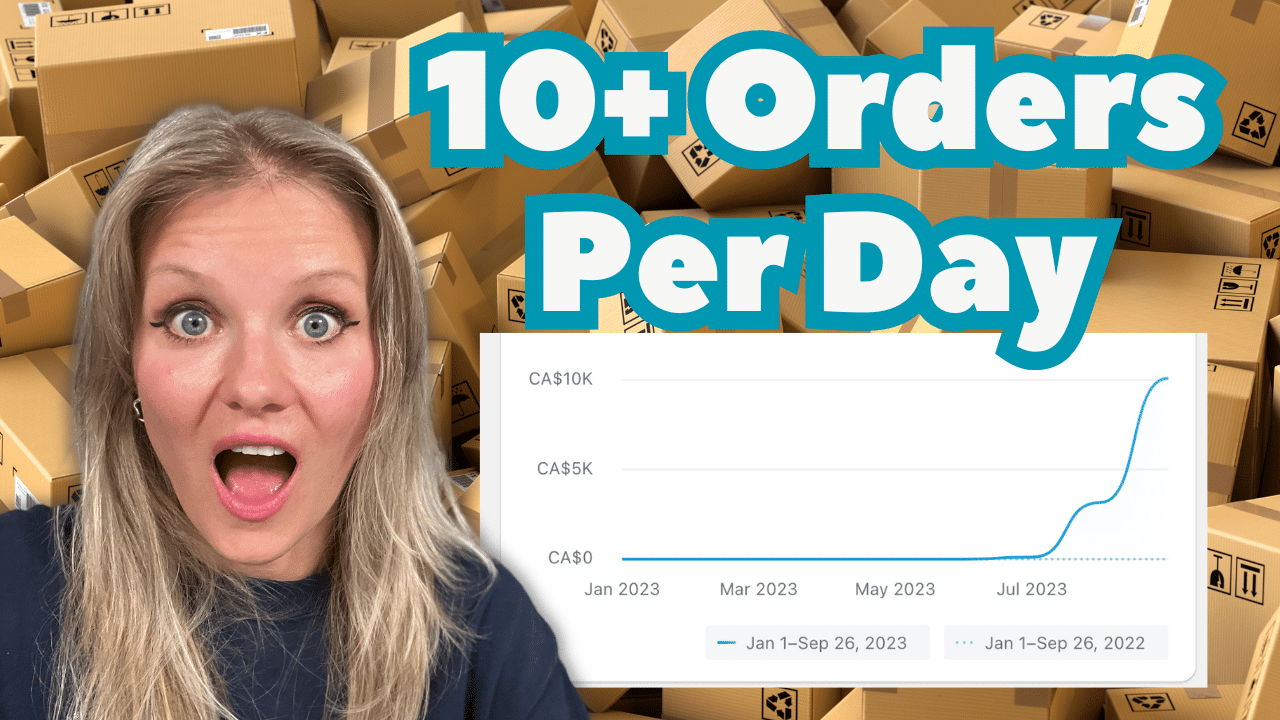Are you a seven-figure seller looking to scale your e-commerce business? If you find yourself puzzled by your website’s underperforming conversion rate, you’re not alone.
We dive into a conversation with Chase Clymer, co-founder of Electric Eye and host of the Honest Ecommerce Podcast. Let’s discuss practical tips to improve your website’s conversion rate, and explore why this aspect is crucial for maximizing profits in the e-commerce industry.
Who is Chase Clymer?
Our guest expert, Chase Clymer, is a seasoned Shopify veteran with seven years of experience in front-end Shopify user experience optimization.
His agency, Electric Eye, specializes in building and enhancing e-commerce websites for established sellers.
Chase brings valuable insights and expertise to the table, focusing on CRO and helping brands maximize their online potential.
Why Invest In A New Website?
When a company hires Chase’s agency for a website “flip,” a complete overhaul or migration to a new platform, they often wonder why such a decision is necessary.
Chase explains that the motivation behind this is diverse, ranging from migrating to a more suitable platform like Shopify to addressing technical debt accumulated from outdated design elements and conflicting app integrations.
In many cases, a redesign aligns with brand updates or provides an opportunity to leverage the performance gains offered by newer themes.
Understanding The Decision-Making Process:

Chase emphasizes that the decision to invest in a new website ultimately rests with the business owner.
Agencies like Electric Eye offer expert advice, but it’s essential for merchants to make informed decisions based on their unique circumstances, budget, and goals.
The agency’s role is to diagnose issues, present options, and guide clients toward the best solutions for their specific needs.
What Is Conversion Rate Optimization (CRO)?
Before we get into the nitty-gritty details, let’s understand what Conversion Rate Optimization (CRO) really means.
Chase shares his insights on the definition of Conversion Rate Optimization. He emphasizes that CRO is named inaccurately and should be called “KPI Optimization.”
The goal of CRO is to enhance a specific Key Performance Indicator (KPI), which can vary depending on individual business objectives.
While conversions often refer to purchases in e-commerce, it’s essential to acknowledge that conversions can include a range of actions such as page views, form submissions, or adding items to the cart. The focus of CRO is to improve the desired KPI and drive better results.
It involves analyzing user behavior, identifying pain points, and implementing changes to enhance the overall user experience.
The Importance of Choosing the Right KPIs:
Navigating the overwhelming array of metrics can be daunting, especially for e-commerce beginners.
Store owners should pay attention to: average order value, conversion rate, and sessions.
By multiplying these three metrics, merchants can gain insights into their sales performance over a specific period.
These KPIs provide a baseline for evaluating where improvements are needed and help determine where to allocate resources effectively.
The Challenge of Attribution:
Attribution, the process of assigning credit for conversions to specific marketing channels, poses a significant hurdle for advertisers and brands.
Chase explains the importance of using third-party tools like Triple Whale for accurate attribution data.
While Shopify provides reliable sales metrics, using additional tools is necessary to achieve proper attribution across various marketing channels. This ensures a more comprehensive understanding of the effectiveness of marketing efforts.
The Misconception About Conversion Rate Optimization:
Conversion Rate Optimization, often referred to as CRO, is a term that is frequently misunderstood. There is a misconception that CRO solely focuses on website conversion rates.
In reality, CRO encompasses various aspects of marketing, including paid ads, landing page conversion rates, and other efforts aimed at improving outcomes. Understanding the true meaning of CRO is crucial for effectively implementing optimization strategies.
Practical Tips for Increasing Conversion Rates:
With a wealth of experience in CRO, Chase shares some actionable tips that can help sellers improve their website conversion rates:
- Optimize Page Load Speed: Slow loading times can significantly impact user experience and conversion rates. Focus on reducing page load times by optimizing image sizes, leveraging caching, and minimizing unnecessary scripts.
- Simplify Navigation: Make it easy for visitors to find what they’re looking for by simplifying your website’s navigation. Clear menus, intuitive categorization, and prominent search functionality can enhance user experience and encourage conversions.
- Streamline Checkout Process: Lengthy and complicated checkout processes can lead to cart abandonment. Simplify and optimize your checkout process by removing unnecessary steps, offering guest checkout options, and minimizing form fields.
- Improve Mobile Responsiveness: With the increasing prevalence of mobile shopping, ensure your website is fully responsive and provides a seamless browsing and purchasing experience across different devices.
- Utilize Clear Call-to-Actions (CTAs): Make it crystal clear what action you want users to take on each page by utilizing compelling and visually distinct CTAs. Direct users to take the desired action, such as “Buy Now,” “Add to Cart,” or “Subscribe
The Importance of Customer Focus:
One major obstacle that sellers face is getting caught up in their own opinions and assumptions. Chase emphasizes the need to shift focus towards the customers’ perspectives and preferences.
It is crucial to align your optimization efforts with what your customers care about and what the data reveals. Relying on personal opinions can hinder progress, whereas leveraging customer insights and analytics is key to successful CRO.
Unveiling the Layers of Conversion Rate Optimization:
Chase introduces the concept of the CRO iceberg, which consists of four tiers. The first tier involves expert heuristic analysis, where professionals offer their expert opinions on what elements need improvement. However, this approach has limitations and only scratches the surface of CRO.
The next tier involves diving deeper into analytics to uncover valuable insights. Analyzing data and metrics, such as sales by page view, can reveal pages that receive high traffic but lack conversions.
This presents an opportunity to optimize those pages and improve conversion rates.
Conducting Customer Research:

The third tier of the CRO iceberg is conducting both passive and active customer research. Passive research involves observing customer behavior on your website, while active research involves directly interacting with customers and obtaining their feedback.
Customer interviews are often overlooked, but they can provide valuable insights into customer preferences, pain points, and browsing habits.
By gaining a deeper understanding of your customers, you can make informed decisions and tailor your website to their needs.
Addressing Performance and User Experience:
The final tier of the CRO iceberg encompasses performance and user experience optimization. Performance optimization involves addressing issues that impact website speed, such as oversized assets and excessive code.
Improving website performance enhances user experience and reduces bounce rates. Additionally, user experience optimization involves improving navigation, ensuring easy browsing, and aligning with established industry standards.
It’s important to strike a balance between uniqueness and familiarity. While it’s tempting to create unconventional navigation, aligning with customer expectations will enhance conversion rates.
How To Choose A Website Hosting Platform?
The choice of website hosting platform depends on your business’s unique needs and goals.
Chase highlights his preference for Shopify as it aligns well with the majority of clients he works with. However, he emphasizes that migrating to a new platform should not be done blindly or as a quick fix.
It is essential to have a strategic reason for the migration, such as overcoming technical debt, gaining cost savings, or accessing specific features and functionality.
Each platform has its strengths and limitations, and the decision should be based on a thorough analysis of how it aligns with your business requirements.
Why Conversion Rate Optimization Tools Are Important?
To enhance your understanding of user behavior and improve your website’s performance, employing the right tools is essential.
Chase’s top recommendation is Hotjar, a comprehensive tool that offers valuable insights into customer interactions. With Hotjar, you can record user sessions, view heat maps, and analyze scroll depth, enabling you to identify areas for optimization.
Heat maps provide visual representations of user interactions, helping you understand which elements are attracting attention and which ones may need improvement.
Additionally, Hotjar’s scroll maps reveal how far users scroll on your pages, allowing you to optimize content placement and engagement.
How User Recordings And Surveys Helps?
Hotjar’s user recording feature enables you to watch how visitors interact with your website in real-time. These recordings uncover unexpected user behaviors, providing valuable insights that can inform optimization strategies.
By identifying areas where users experience frustration, such as “rage clicks,” you can pinpoint pain points and make necessary improvements.
Hotjar also offers survey tools that allow you to gather qualitative feedback from your customers. Open-ended questions in pop-up surveys help you understand what information may be missing or what brought users to your site, giving you direct input from your audience.
Should You Implement Smart Survey Strategies?
When utilizing surveys, it’s important to set triggers for specific moments, such as when users are about to abandon a page or are browsing collection pages.
By asking open-ended questions and seeking user feedback, you gain a deeper understanding of their needs and preferences. This qualitative data is invaluable for refining your website and creating a better user experience.
Should You Use Split Testing Tools?
With the discontinuation of Google’s split testing tool, Chase suggests exploring alternative options.
While specific tools are not mentioned in the conversation, there are split testing tools available within the Shopify ecosystem.
These tools offer opportunities to test and optimize various elements, such as shipping thresholds. As the market evolves, new players may emerge with split testing tools tailored to the needs of small and medium-sized businesses.
Harnessing Qualitative Strategies:
Chase underscores the importance of qualitative research for effective CRO. He advises against seeking quick wins, emphasizing that CRO is an ongoing process that requires a mindset of continuous testing and learning.
Engaging with customers through surveys, interviews, and user tests helps uncover valuable insights. Surveys provide an opportunity to gather feedback and address specific questions or concerns.
Interviews with VIP customers or user tests conducted by third-party services can reveal how customers perceive your brand and identify areas of improvement.
Conclusion:
Conquering mental blocks and uncertainties is vital for successful Conversion Rate Optimization. Mastering Conversion Rate Optimization is crucial for e-commerce success.
By dispelling misconceptions and understanding the true essence of CRO, you can implement strategies that improve your website’s conversion rate and overall performance.





